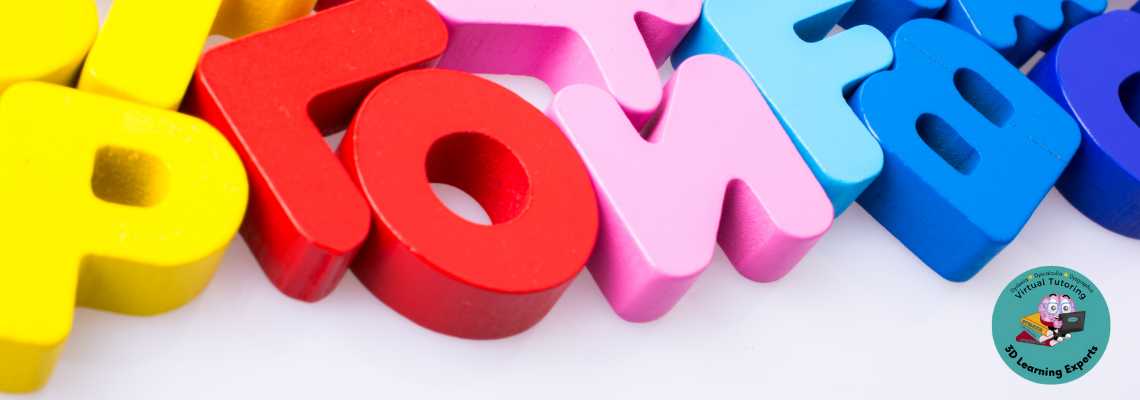For children with Dyslexia, reading can feel like an uphill battle. Letters seem to dance on the page, words blur together, and even simple sentences can be exhausting to decipher. But what if a simple font change could make reading easier?
Many parents and educators are discovering the benefits of Dyslexia-friendly fonts, specially designed to improve readability and reduce frustration for struggling readers.
How Dyslexia-Friendly Fonts Work
Dyslexia-friendly fonts are designed with specific features that make it easier for the brain to process letters and words. Traditional typefaces can make it difficult for kids with Dyslexia to differentiate similar-looking letters like b, d, p, and q, which can lead to reading errors and frustration.
Fonts designed for Dyslexia improve readability by incorporating:
- Distinct letter shapes – Each letter has a unique form, reducing confusion between similar-looking characters.
- Heavier bottom weighting – This helps anchor the letters and prevents them from appearing to “flip” or “rotate” on the page.
- Increased spacing between letters – Extra space reduces crowding and makes each word easier to recognize.
- Simplified letterforms – Some fonts remove unnecessary decorative elements that can distract from the text.
Which Fonts Help Kids with Dyslexia?
Several fonts have been developed specifically for Dyslexia, including:
- Dyslexie Font – One of the most well-known Dyslexia-friendly fonts, it features heavier bottom-weighted letters and extra spacing.
- OpenDyslexic – A free-to-use font that helps anchor letters on the baseline, reducing movement and flipping.
- Arial and Verdana – While not Dyslexia-specific, these sans-serif fonts have clean, simple lines that can improve readability.
- Lexend – A Google font designed with spacing and letterform adjustments to support reading fluency.
Are Dyslexia-Friendly Fonts Enough?
While using the right font can make reading easier, it’s important to remember that fonts alone are not a cure for Dyslexia. Reading difficulties stem from challenges with phonemic awareness, decoding, and fluency, which require structured and evidence-based interventions.
That’s where 3D Learning Experts comes in.
How We Help Struggling Readers
At 3D Learning Experts, we specialize in online tutoring for children with Dyslexia, Dysgraphia, Dyscalculia, and other learning differences. Our approach goes beyond font selection—we provide personalized instruction tailored to each child’s unique learning needs.
Our Key Services Include:
- One-on-One Online Tutoring – Individualized, evidence-based instruction to help children improve their reading, writing, and math skills.
- Dyslexia, Dysgraphia & Dyscalculia Tutoring – Specialized support for children struggling with these learning differences, using research-backed methods to strengthen foundational skills.
- Homeschool Consulting – Expert guidance to help parents create customized learning plans that fit their child’s unique strengths and challenges.
- Executive Function Coaching – Support for students who struggle with organization, time management, and study skills, helping them become more independent learners.
- IEP & 504 Plan Advocacy – Assistance for parents navigating the school system to ensure their child gets the accommodations and support they need.
- Assistive Technology Guidance – Recommendations on Dyslexia-friendly tools, apps, and software that enhance learning and accessibility.
Beyond Fonts: Other Ways to Support Dyslexic Readers
In addition to using a Dyslexia-friendly font, here are other strategies that can make reading easier for your child:
- Use audiobooks to support comprehension while strengthening listening skills.
- Try text-to-speech software to help children follow along as words are read aloud.
- Encourage finger tracking to keep place while reading.
- Break reading sessions into shorter time blocks to avoid fatigue.
- Use high-contrast backgrounds (like cream or light yellow) instead of stark white pages.
Give Your Child the Support They Deserve
Changing the font your child reads in can be a game-changer, but the best results come from a combination of strategies, support, and specialized instruction. If your child struggles with reading, we’re here to help!
At 3D Learning Experts, we provide expert-led online tutoring tailored for children with Dyslexia and other learning differences. Our proven methods help kids build confidence, improve reading skills, and enjoy learning again.
Schedule a free consultation today! Let’s help your child unlock their full potential.

